The Majestic Theatre, designed by prolific theatre designer John Eberson, is considered one of his crowning achievements. San Antonio’s Spanish and Moorish heritage inspired the grand movie palace, which first opened on June 14, 1929.
Once inside, patrons were whisked away to a fantasy land, complete with simulated clouds moving across the dark blue ceiling and a constellation of twinkling stars mirroring the celestial arrangement from the night the theatre opened in 1929. The interior further came alive with foliage, greenery and a variety of stuffed birds, including doves and peacocks, all expertly woven into the theatre’s fantastical design.
After years of dazzling audiences, by the early 1980s, the Majestic’s curtain seemed to be closing for good, with time taking its toll and the venue in disrepair. However, it found new life thanks to the dedicated efforts of Jocelyn ‘Joci’ Straus and Las Casas Foundation, now The Majestic Empire Foundation. With passion, precision and a price tag of $4.5 million, the Majestic Theatre was lovingly restored to its original grandeur in just 11 months, reopening in September 1989.
Today, the Majestic Theatre is home to Broadway in San Antonio, national touring concerts, comedy shows, children’s events and more. In partnership with The Majestic Empire Foundation, the Majestic and its sister venue, the Charline McCombs Empire Theatre, offer educational opportunities for students that enrich arts education and cultivate a diverse future audience for live theatre. Tours of both theatres, where guides share history and architectural details, are available, with Spanish-language tours coming this spring.
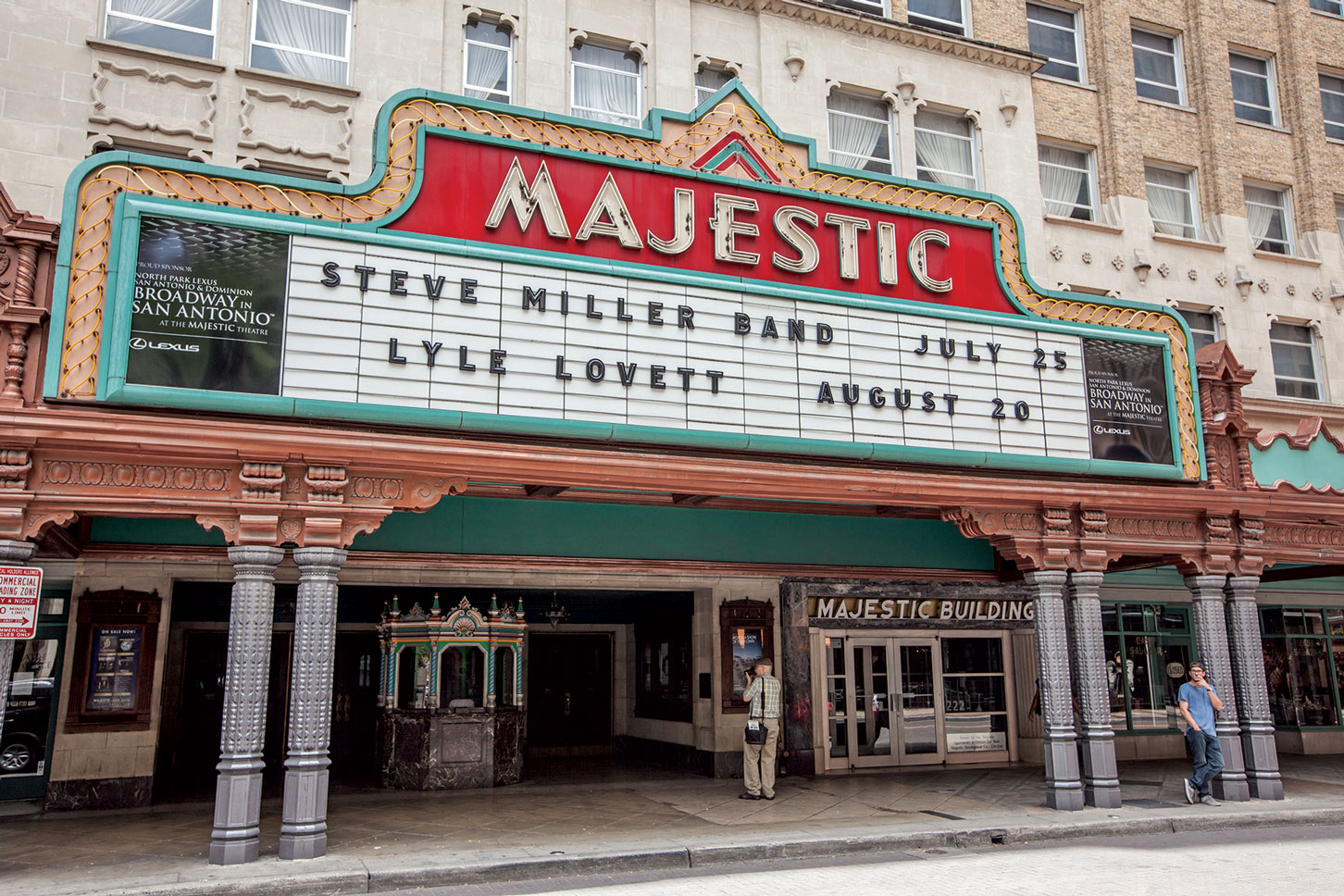
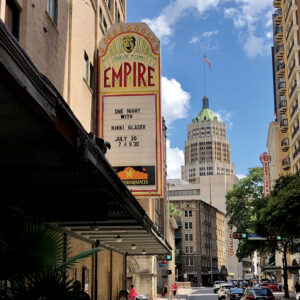 Empire Theatre: A Blend of Old and New
Empire Theatre: A Blend of Old and NewBuilt on the site of a former opera house, the Empire Theatre opened in 1914 as San Antonio’s first modern theatre. Designed in the style of a European palazzo, it began as a vaudeville venue before transitioning into a movie house.
From the moment audiences stepped inside, the Empire Theatre dazzled with its ornate interior — gilded goddesses, floral designs and medallions adorned in layers of gold leaf, bronze and copper. At the time, the theatre featured cutting-edge innovations, including electric lighting, fans and motorized stage equipment. It quickly became a hub for entertainment, welcoming legendary performers like Charlie Chaplin, Mae West and Gene Autry to its stage.
In 1921, disaster struck when a catastrophic flood devastated San Antonio, submerging the Empire in up to nine feet of water. Mold and mildew set in as the water receded, and workers painted over the theatre’s gilded proscenium in stark white, losing its original brilliance. Following years of decline, the Empire Theatre closed in 1978. However, after successfully restoring the Majestic Theatre, The Majestic Empire Foundation launched a restoration effort for its sister theatre, where artisans painstakingly revived the original color scheme and restored pounds of gold leaf to the intricate plasterwork.
In 1998, after a $5 million renovation, the theatre reopened as the Charline McCombs Empire Theatre, named in honor of a generous gift from local philanthropists Charline and BJ (Red) McCombs to complete the project. The theatre continues to shine today, hosting live performances, concerts and local events.
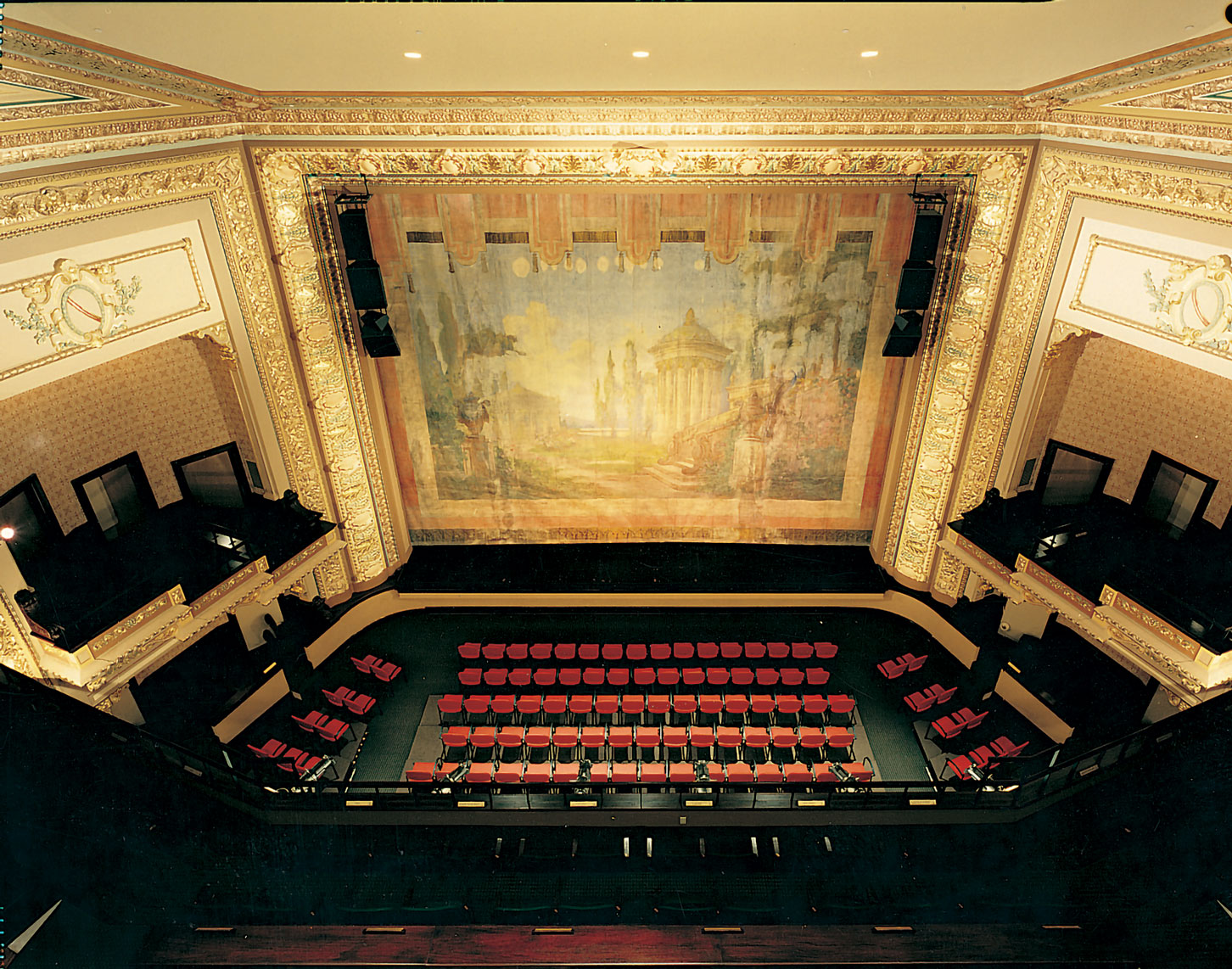
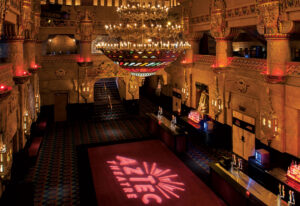 Aztec Theatre: A Unique Cultural Landmark
Aztec Theatre: A Unique Cultural LandmarkWhen the Aztec Theatre opened its doors on June 4, 1926, it was considered one of the most extravagant movie palaces of its time. Designed by a renowned architectural firm best known for Los Angeles’ Egyptian and Chinese Theatres, the venue embraced the grandeur of Mesoamerican Revival architecture. Along with a two-ton chandelier dominating the lobby, the theatre’s lavish decor included vibrantly colored columns, sculptures, furnishings and murals, many of which were authentic reproductions of ancient Mesoamerican artifacts.
Initially built for silent films, the Aztec quickly adapted to the evolution of cinema and screened its first talking picture just one year after opening. By the 1970s, as grand movie palaces struggled, the Aztec was divided into three smaller auditoriums and rebranded as the Aztec Triplex. Despite these efforts, the venue ultimately closed its doors in 1989.
Recognizing its historical and architectural significance, the San Antonio Conservation Society stepped in to save the Aztec in 1983; however, it wasn’t until the late 1990s that a full restoration effort began. The theatre reopened in 2006 as Aztec on the River, a multi-sensory attraction that, while innovative, was short-lived, closing in 2007. After sitting vacant, the theatre briefly found new life in 2009 with San Antonio Rose Live, a country and gospel music showcase. Its true revival came in 2013 when the Aztec was reimagined as a live entertainment venue, as it remains today.
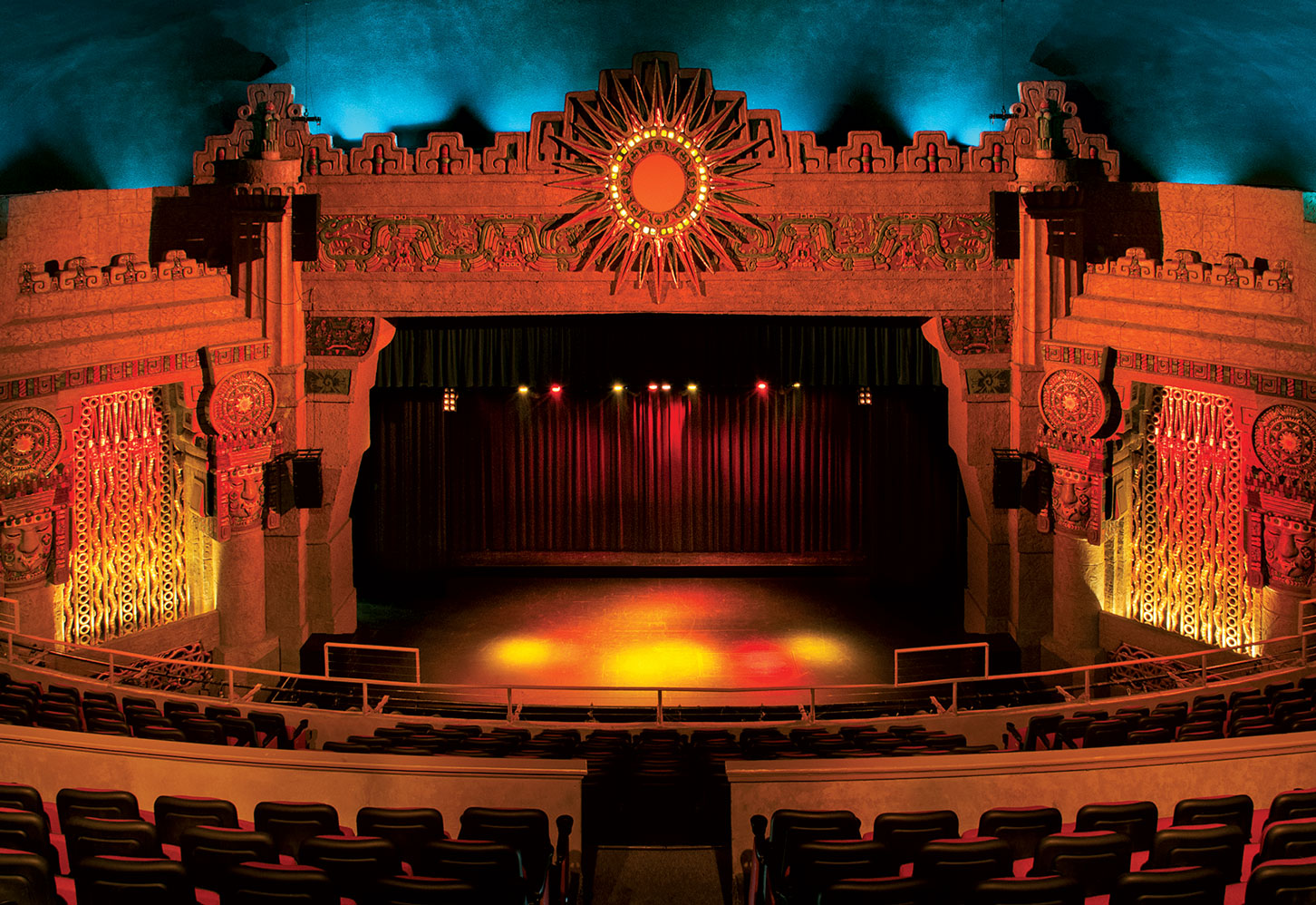
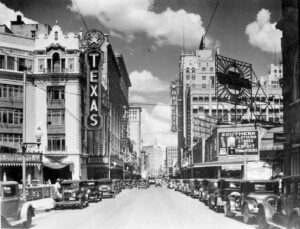
The Texas Theatre, a once-grand movie palace, opened in 1926. Designed by the Kansas City architectural firm of Robert Otto Boller, the venue showcased a Spanish Revival style. Its facade featured terracotta columns and multicolored arches, while indoors, the 3,000-seat auditorium provided a luxurious setting for moviegoers.
Despite its initial success, the theatre faced challenges as time progressed with the rise of urban flight and decreased patronage. The theatre eventually closed in the 1970s, leaving the building unused and vulnerable to deterioration. In the early 1980s, plans emerged to develop a new bank building on the site of the Texas Theatre, threatening its demolition. Despite efforts by the San Antonio Conservation Society to preserve the entire building, ultimately, only the theatre’s ornamental facade was saved.
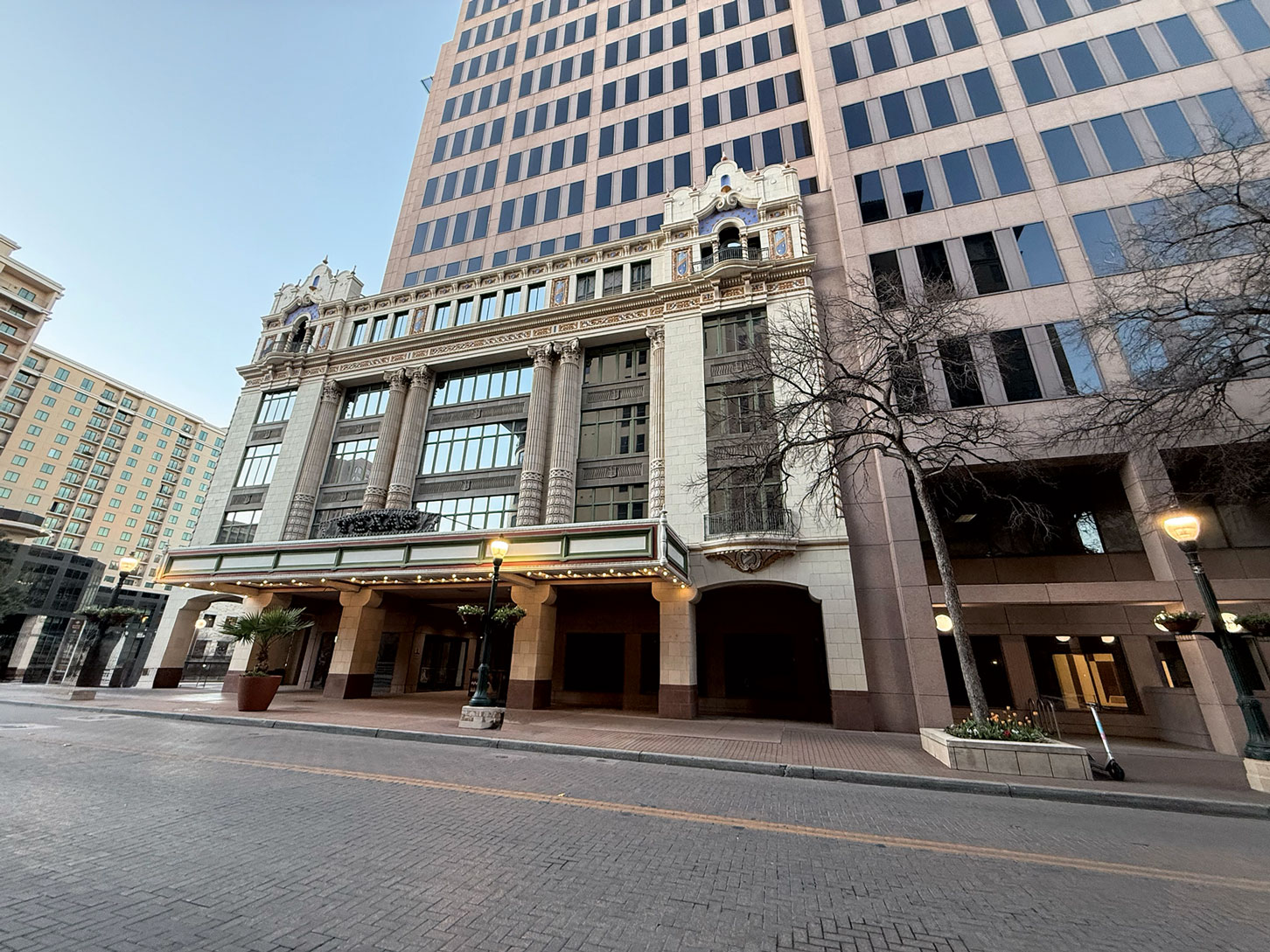 The District Today
The District TodayThe Majestic, Empire and Aztec Theatres continue to serve as anchors of San Antonio’s downtown theatre district and economic catalysts in the revitalization of the city center. They generate increased revenue from dining, hotel bookings, parking, catering and backstage support needs.
With the theatres’ rich histories and continued operation, the district remains a hub for the arts, captivating audiences with its unique blend of history, architecture and world-class performances.
Join our newsletter now and get all the information on arts, culture & fun around San Antonio straight to your inbox!